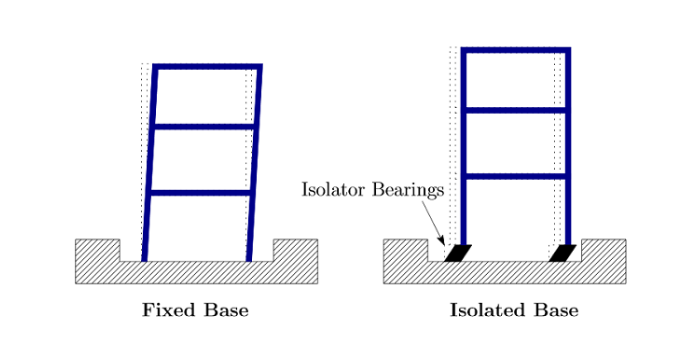When an earthquake strikes, the force from its seismic waves can weaken the stability of buildings. By implementing seismic control measures, designers can enhance the flexibility of such structures as well as strengthen their safety levels. See how one research team used COMSOL Multiphysics to study the impact of base isolation systems and explore approaches to optimizing their performance.
The Seismic Control of Structures
One of the most common effects associated with an earthquake is shaking. Depending on the size and magnitude of the seismic waves, this shaking can result in various levels of destruction. In the case of buildings, such waves can produce instability or, in more extreme cases, cause structures to collapse.
Seismic control is an important consideration in the design of buildings. This is particularly relevant to taller structures, which pose a greater risk to human life during earthquakes. Such control can be achieved through various techniques, one of which includes a passive control approach where an external energy source isn’t required.
A base isolation system is an example of such a passive control method. As indicated by its name, a base isolation system isolates a structure’s base from its foundation with the use of a bearing. The bearing, which acts as an isolator, deflects and absorbs seismic waves, helping to protect the structure from the force of the vibrations

Base isolation systems are valued for their simplistic construction and installation as well as their ability to be installed in existing buildings. Such systems can be used effectively in tall structures featuring multiple levels and in buildings with up to 20 stories.
